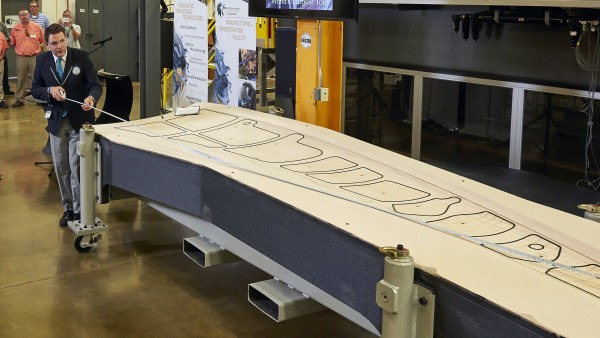
Official measurement of the 3D printed trim tool co-developed by Oak Ridge National Laboratory and The Boeing Company exceeded the required minimum size to achieve the Guinness World Records title of largest solid 3D printed item. Pictured above on Monday, Aug. 29, 2016, is Guinness World Records Judge Michael Empric. (Photo courtesy ORNL, U.S. Department of Energy)
HARDIN VALLEY—A tool made by Oak Ridge National Laboratory has set a world record for largest solid item manufactured on a 3D printer. Guinness World Records confirmed the tool’s measurements during a visit to ORNL’s Manufacturing Demonstration Facility in Hardin Valley on Monday.
The trim-and-drill tool measures 17.5 feet long, 5.5 feet wide, and 1.5 feet tall. It’s comparable in length to a large sport utility vehicle and weighs approximately 1,650 pounds.
It will be used to help make a wing part on the Boeing 777X airplane, a passenger jet. After ORNL completes some testing, Boeing will evaluate the tool in the company’s new production facility in St. Louis and then provide information to ORNL about its performance.
ORNL printed the trim-and-drill tool in only 30 hours on a 3D printer at the Manufacturing Demonstration Facility in Hardin Valley using mostly ABS (acrylonitrile butadiene styrene) mixed with about 20 percent carbon fiber. ABS is the same material used to produce Legos, and it’s a tough, strong polymer, said Bill Peter, MDF director.
Judge Michael Empric said Guinness World Records had set a minimum measurement of 10.5 cubic feet for the new largest solid 3D printed item, which is a new category. The Boeing tool printed by ORNL measured much larger, 82.4 cubic feet, Empric said.
The original tool was printed in one piece and was larger, but it was trimmed down, Empric said.
Weight is not part of the record.
The new category specifies that the item has to be solid, as opposed to using a lattice or honeycomb.
It’s the second world record for Oak Ridge National Laboratory.
3D printing, also called additive manufacturing, is the process of building an item layer by layer using metals, polymers, or ceramics. The Boeing tool was printed on a Big Area Additive Manufacturing, or BAAM, machine made by a company called Cincinnati Incorporated.
The 30 hours needed to manufacture the tool at the MDF saved significant time. It would normally take three months to make the trim-and-drill tool from a heavy, metal block, said Leo Christodoulou, chief engineer for materials and manufacturing technology in Boeing Research and Technology. Also, that metal tool would not be easily modified.
The 3D printed tool is thick. That’s to give it stiffness and rigidity, Christodoulou said.
It has a vacuum system that will suck the wing part onto the tool and create a seal. That will keep the wing part, a flap on the trailing edge in the center of the wing of the 777X, from moving as the part is trimmed and drilled, Peter said.
ORNL Director Thom Mason said the 3D printed tool will save time, money, and energy. Christodoulou said it saved about 90 percent of the original cost and will allow for a perfect trim.
“This tool—it’s truly a breakthrough,” Christodoulou said during the Monday morning award ceremony.
He said Boeing has been using 3D printed items since as early as 2003 and now has about 50,000 non-structural 3D printed parts, such as those made of nylon.
The record-setting tool printed by ORNL is the largest and most complex for Boeing, Christodoulou said.
“Additively manufactured tools, such as the 777X wing trim tool, will save energy, time, labor, and production costs and are part of our overall strategy to apply 3D printing technology in key production areas,â€Â Christodoulou said.
Peter said a few local companies, Techmer and TruDesign, were involved in the production of the trim-and-drill tool at the MDF.
“The recognition by Guinness World Records draws attention to the advances we’re making in large-scale additive manufacturing composites research,†said Vlastimil Kunc, leader of ORNL’s polymer materials development team. “Using 3D printing, we could design the tool with less material and without compromising its function.â€
Production of the 777X is scheduled to begin in 2017, and the first delivery is targeted for 2020.
The other world record set by ORNL was set by the Spallation Neutron Source, which provides the most intense pulsed neutron beams in the world for scientific research and industrial development. The record of 160 kilowatts had been set by the ISIS neutron source in Oxford, England, but SNS set a record of about 180 kilowatts in August 2007. SNS now operates at about 1.4 megawatts, Mason said.
In that case, ORNL had to provide documents to Guinness World Records to confirm the new record.

Guinness World Records Judge Michael Empric, from left, awarded the title of largest solid 3D printed item on Monday, Aug. 29, 2016, to ORNL Laboratory Director Thom Mason, Leo Christodoulou from The Boeing Company, ORNL’s Vlastimil Kunc, and Mike Matlack from Boeing. They are in front of the trim-and-drill tool and the 3D printer used to make it at ORNL’s Manufacturing Demonstration Facility in Hardin Valley. (Photo courtesy ORNL, U.S. Department of Energy)
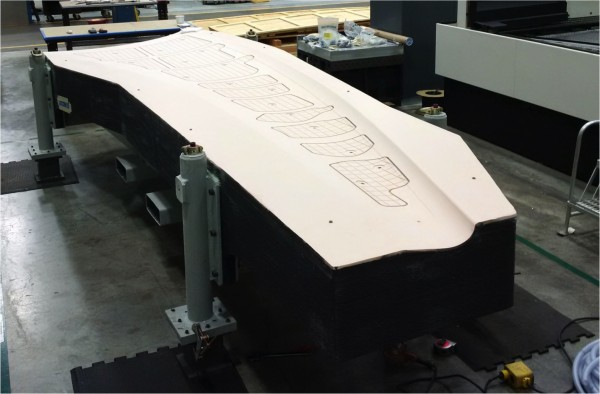
A 3D printed trim tool that was developed by ORNL and Boeing, and that will be used in building Boeing’s 777X passenger jet, has received the title of largest solid 3D printed item by Guinness World Records. (Photo courtesy ORNL, U.S. Department of Energy)
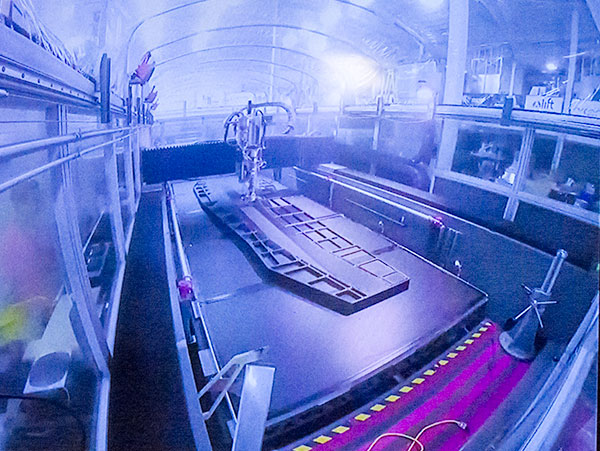
A Cincinnati BAAM 3D printer is pictured above from a video still manufacturing the trim-and-drill tool for Boeing at ORNL’s Manufacturing Demonstration Facility in Hardin Valley. The tool will be used to help make a wing part for the 777X passenger jet, and it has set a Guinness World Record for largest solid printed 3D item. (Photo by John Huotari/Oak Ridge Today)
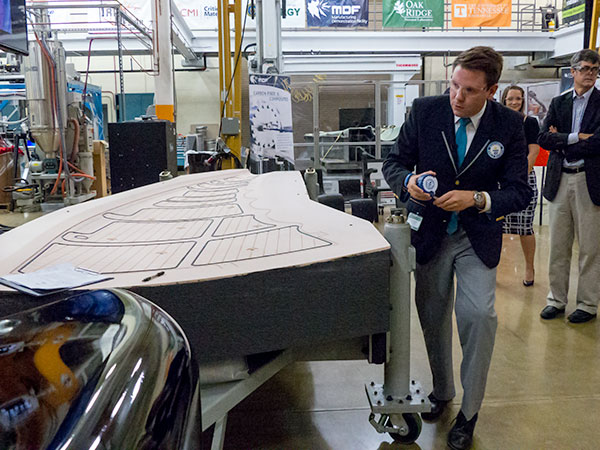
Guinness World Records Judge Michael Empric measures the trim-and-drill tool made for Boeing by ORNL at the Manufacturing Demonstration Facility in Hardin Valley. The tool will be used for a wing part on the 777X passenger jet, and it set a world record for largest solid 3D printed item on Monday, Aug. 29, 2016. (Photo by John Huotari/Oak Ridge Today)
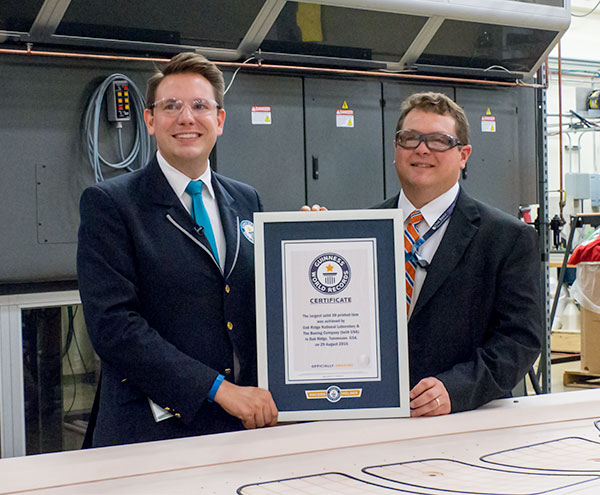
Guinness World Records Judge Michael Empric, left, is pictured above with Bill Peter, director of ORNL’s Manufacturing Demonstration Facility in Hardin Valley, after Empric had confirmed that a trim-and-drill tool made at the MDF for Boeing had set the world record for largest solid printed 3D item on Monday, Aug. 29, 2016. (Photo by John Huotari/Oak Ridge Today)
See more photos here.
Do you appreciate this story or our work in general? If so, please consider subscribing to Oak Ridge Today. See our Subscribe page here. Thank you for reading Oak Ridge Today.
Copyright 2015 Oak Ridge Today. All rights reserved. This material may not be published, broadcast, rewritten, or redistributed.

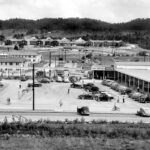







Leave a Reply